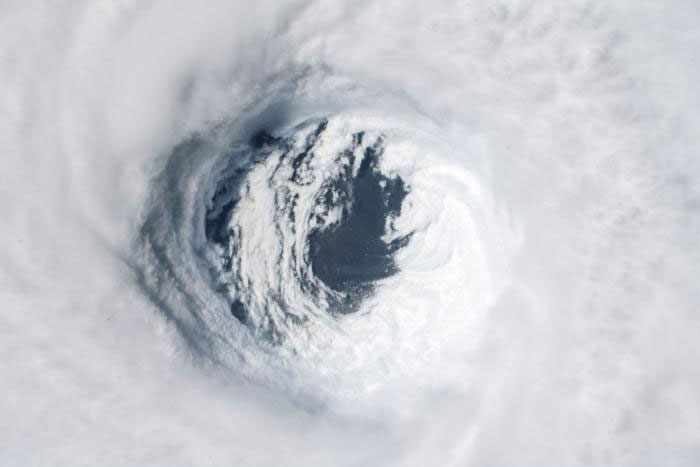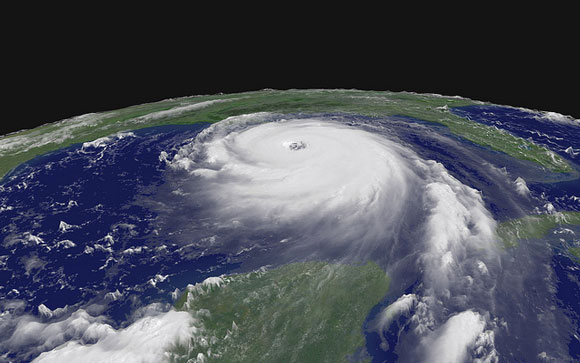And You Will Know Why Storms Are Named

The 2021 Atlantic hurricane flavor is on. The season officially starts June 1 and extends through Nov xxx.
Just a few days subsequently the National Oceanic and Atmospheric Administration (NOAA) released this twelvemonth's hurricane season outlook, predicting a busier-than-average hurricane season, Tropical Storm Ana became the showtime named storm of the season when information technology formed off Bermuda on May 22. That makes 2021 the seventh directly twelvemonth in which at least 1 named storm has developed in the Atlantic basin before hurricane season'due south official showtime date.
Where do hurricane names come from?
Did you e'er wonder how hurricanes get their names, and why they have names at all? Meteorologists long ago learned that naming tropical storms and hurricanes helps people retrieve the storms, communicate about them more effectively, and consequently stay safer if and when a particular storm strikes a coast.
These experts assign names to hurricanes co-ordinate to a formal list of names that is canonical before the commencement of each hurricane season. The U.S. National Hurricane Center started this practice in the early 1950s. Now, the World Meteorological Organization (WMO) generates and maintains the list of hurricane names.
Here are the hurricane names for 2021
Atlantic hurricane names (flavour runs from June 1 to November 30) are: Ana, Bill, Claudette, Danny, Elsa, Fred, Grace, Henri, Ida, Julian, Kate, Larry, Mindy, Nicholas, Odette, Peter, Rose, Sam, Teresa, Victor and Wanda.
Although NOAA forecasts a decorated 2021 Atlantic hurricane season, the agency doesn't anticipate the historic level of tempest activity seen in 2020's record-breaking flavor, which had 30 named storms. It was only the 2nd fourth dimension the listing of tempest names was wearied in a flavor since naming began. Only, in case all 21 names are used once more this year, hither's a new supplemental list from the WMO: Adria, Braylen, Caridad, Deshawn, Emery, Foster, Gemma, Heath, Isla, Jacobus, Kenzie, Lucio, Makayla, Nolan, Orlanda, Pax, Ronin, Sophie, Tayshaun, Viviana, and Will.
Eastern North Pacific hurricane names (season runs from May xv to November xxx) are: Andres, Blanca, Carlos, Dolores, Enrique, Felicia, Guillermo, Hilda, Ignacio, Jimena, Kevin, Linda, Marty, Nora, Olaf, Pamela, Rick, Sandra, Terry, Vivian, Waldo, Xina, York, and Zelda.
If you're interested, yous can view those names, and names for upcoming years, at the U.Due south. National Hurricane Center.

How and why did hurricanes first begin receiving names?
While people have been naming major storms for hundreds of years, most hurricanes were originally designated by a system of latitude-longitude numbers, which was useful to meteorologists trying to runway these storms. Unfortunately, this arrangement dislocated people living on coasts seeking hurricane data.
In the early 1950s, the U.S. National Hurricane Center commencement developed a formal practise for storm naming for the Atlantic Ocean. At that fourth dimension, storms were named according to a phonetic alphabet (e.g., Able, Bakery, Charlie) and the names used were the same for each hurricane flavour; in other words, the first hurricane of a season was ever named "Able," the second "Baker," and so on.
In 1953, to avert the repetitive use of names, the National Weather Service revised the arrangement and then that storms would exist given female person names. By doing this, the National Weather condition Service was mimicking the habit of naval meteorologists, who named the storms later women, much as ships at sea were traditionally named for women.
In 1978–1979, the organisation was revised again to include both female and male hurricane names.
See the consummate history of naming hurricanes, from NOAA
When does a storm receive a proper noun?
Tropical storms are given names when they display a rotating circulation pattern and wind speeds reach 39 miles per hr (63 kilometers per hour). A tropical storm develops into a hurricane when wind speeds go in a higher place 74 mph (119 kph).
Experts have developed lists of hurricane names for many of the major bounding main basins around the world. Today, in that location are six lists of hurricane names in utilise for Atlantic Bounding main and Eastern Due north Pacific storms. These lists rotate, one each twelvemonth. That means the list of this year's hurricane names for each bowl will come again vi years from now.
There's an exception to this practice, however. The WMO retires the names of extremely damaging hurricanes for legal, cultural sensitivity, and historical reasons. For example, the use of the name Katrina was retired in 2005 following the devastating impact that Hurricane Katrina had on New Orleans. In March 2019, the WMO removed the names Florence and Michael from its lists for the Atlantic Ocean bowl and replaced the names with Francine and Milton. Hurricanes Florence and Michael, which respectively struck the coasts of North Carolina and Florida in 2018, each caused tremendous harm and dozens of fatalities.

Bottom line: How hurricanes get their names, and the hurricane names for the 2021 season.
Source: https://earthsky.org/earth/how-do-hurricanes-get-their-names/
0 Response to "And You Will Know Why Storms Are Named"
Post a Comment